-
 Bitcoin
Bitcoin $115100
1.27% -
 Ethereum
Ethereum $3675
2.71% -
 XRP
XRP $2.995
1.45% -
 Tether USDt
Tether USDt $1.000
0.02% -
 BNB
BNB $769.8
2.64% -
 Solana
Solana $168.0
3.25% -
 USDC
USDC $0.9999
-0.01% -
 TRON
TRON $0.3371
1.48% -
 Dogecoin
Dogecoin $0.2051
3.36% -
 Cardano
Cardano $0.7394
2.30% -
 Hyperliquid
Hyperliquid $38.15
0.42% -
 Stellar
Stellar $0.3966
-0.36% -
 Sui
Sui $3.486
2.93% -
 Chainlink
Chainlink $16.72
2.52% -
 Bitcoin Cash
Bitcoin Cash $568.0
4.36% -
 Hedera
Hedera $0.2440
2.59% -
 Ethena USDe
Ethena USDe $1.001
0.04% -
 Avalanche
Avalanche $22.16
2.06% -
 Litecoin
Litecoin $119.1
-0.73% -
 UNUS SED LEO
UNUS SED LEO $8.991
0.04% -
 Toncoin
Toncoin $3.232
-0.39% -
 Shiba Inu
Shiba Inu $0.00001233
2.82% -
 Uniswap
Uniswap $9.717
2.53% -
 Polkadot
Polkadot $3.664
1.85% -
 Dai
Dai $1.000
0.01% -
 Monero
Monero $281.2
-3.89% -
 Bitget Token
Bitget Token $4.350
1.55% -
 Cronos
Cronos $0.1428
5.07% -
 Pepe
Pepe $0.00001050
3.68% -
 Aave
Aave $262.3
3.54%
Are USDT and USD the same currency?
USDT, while pegged to the US dollar, isn't equivalent to USD; it's a cryptocurrency with differing regulation, accessibility, and transaction speeds, and its 1:1 peg isn't always guaranteed due to market factors and transparency concerns regarding its reserves.
Mar 18, 2025 at 02:42 am
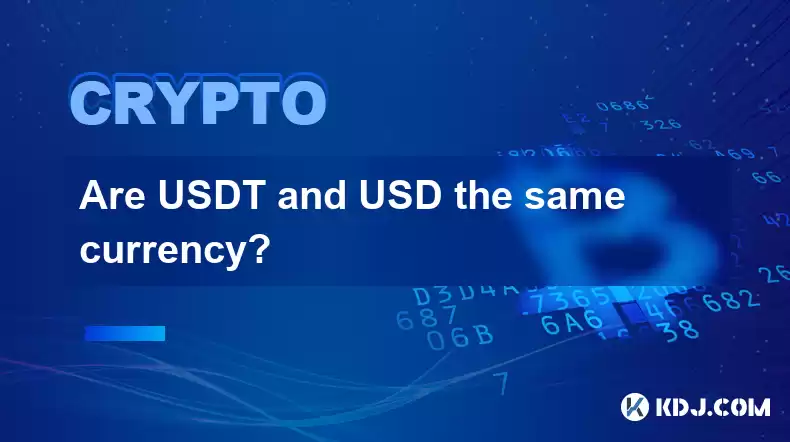
Key Points:
- USDT (Tether) is a cryptocurrency pegged to the US dollar (USD). This means one USDT theoretically represents one USD.
- However, USDT is not the same as USD. It's a digital token operating on a blockchain, while USD is a fiat currency issued by governments.
- Differences lie in their regulation, accessibility, transaction speeds, and underlying mechanisms.
- While USDT aims for a 1:1 parity with USD, this is not always guaranteed due to market fluctuations and regulatory concerns.
Are USDT and USD the Same Currency?
No, USDT and USD are not the same currency, despite the intention of a 1:1 peg. The US dollar (USD) is a fiat currency, meaning its value is determined by government regulation and market forces. It's a physical and digital currency used globally for transactions and as a reserve currency. Its value is backed by the full faith and credit of the United States government.
USDT, on the other hand, is a cryptocurrency, a digital token operating on a blockchain. It's designed to maintain a 1:1 peg with the USD, meaning one USDT should be equivalent to one USD. However, this is a crucial distinction. The value of USDT isn't directly backed by physical USD reserves in a way that’s consistently auditable and verifiable to the satisfaction of all parties.
The fundamental difference lies in their underlying mechanisms. USD is issued and regulated by central banks, subject to governmental oversight and monetary policies. USDT, issued by Tether, operates within the decentralized nature of a blockchain, subject to different regulatory frameworks and market forces. This lack of central control introduces complexities and risks not present with traditional fiat currencies.
The accessibility of each currency also differs significantly. USD is readily available through traditional banking systems and ATMs worldwide. Accessing USDT requires interacting with cryptocurrency exchanges, which involves various verification processes and may be subject to geographical restrictions. The transaction speeds also vary considerably; USD transactions through traditional banking systems can be slow, while USDT transactions on the blockchain are generally faster, though subject to network congestion.
How is USDT's Value Maintained?
Tether claims to maintain a 1:1 peg with the USD through reserves of equivalent value. However, the precise composition and verification of these reserves have been a source of ongoing scrutiny and debate within the cryptocurrency community. Transparency regarding the reserves has been a significant point of contention, affecting public confidence in USDT's stability. Audits of Tether's reserves have been conducted, but their methodology and conclusions have been challenged.
Fluctuations in the value of USDT relative to the USD do occur, albeit often within a narrow range. These fluctuations can stem from various factors, including market sentiment, trading volume, and perceived risks associated with Tether's reserves and regulatory uncertainties.
What are the Risks Associated with Using USDT?
The primary risk associated with USDT is the potential for de-pegging from the USD. If trust in Tether's reserves or its ability to maintain the peg erodes, investors might rush to sell USDT, potentially causing a significant drop in its value. This could lead to substantial financial losses for those holding USDT.
Regulatory uncertainty also presents a risk. The legal status and regulatory oversight of USDT vary across jurisdictions. Changes in regulatory frameworks could significantly impact the usability and value of USDT. Furthermore, the concentration of power within Tether itself presents another risk; the company’s actions and decisions have a direct impact on the value of USDT, leaving users with limited recourse in case of disputes.
What are the Advantages of Using USDT?
Despite the risks, USDT offers several advantages within the cryptocurrency ecosystem. Its primary benefit is facilitating easier transactions between different cryptocurrencies. Instead of converting directly between cryptocurrencies, users can first convert to USDT, a stablecoin, and then to their desired cryptocurrency. This process often reduces volatility and transaction fees.
The speed of USDT transactions is also a significant advantage compared to traditional banking systems, enabling faster and more efficient cross-border payments. USDT's accessibility within the cryptocurrency world makes it a crucial element in many decentralized finance (DeFi) applications and protocols.
Frequently Asked Questions:
Q: Can I use USDT like I use USD?
A: While USDT aims to mirror USD, it's not a direct replacement. You can't use it for everyday transactions in the same way as USD in most places. Its primary use is within the cryptocurrency ecosystem.
Q: Is USDT regulated?
A: The regulatory status of USDT varies significantly across jurisdictions. There's no single global regulatory body overseeing its operation. This lack of consistent regulation adds to its inherent risk.
Q: Is USDT backed by the US government?
A: No, USDT is not backed by the US government. Its value is tied to Tether's claimed reserves, not the full faith and credit of the US government.
Q: What happens if Tether loses its 1:1 peg?
A: If Tether loses its 1:1 peg with the USD, the value of USDT would likely plummet. This could lead to significant financial losses for those holding USDT. The impact would ripple throughout the cryptocurrency market.
Q: Are there alternatives to USDT?
A: Yes, several other stablecoins exist, each with its own mechanisms for maintaining value and its own set of risks and advantages. These include USDC, BUSD, and DAI, among others. It’s important to research these alternatives before investing.
Disclaimer:info@kdj.com
The information provided is not trading advice. kdj.com does not assume any responsibility for any investments made based on the information provided in this article. Cryptocurrencies are highly volatile and it is highly recommended that you invest with caution after thorough research!
If you believe that the content used on this website infringes your copyright, please contact us immediately (info@kdj.com) and we will delete it promptly.
- BlockDAG, Litecoin, and Cardano: Charting the Course in Crypto's Dynamic Waters
- 2025-08-07 09:09:06
- Fireverse Token: Igniting a Musical Revolution in Web3
- 2025-08-07 08:27:45
- Ethereum, L2 Withdrawals, and Decentralization: A New Yorker's Take
- 2025-08-07 08:32:33
- Avalanche vs. Ruvi AI: Daily Sales Tell a Story of Crypto Disruption
- 2025-08-07 06:29:35
- DeSoc: The Crypto to Buy Now for a Decentralized Future (and Maybe 43x Gains!)
- 2025-08-07 06:50:16
- Arctic Pablo Coin: Riding the Meme Coin Wave with a Deflationary Twist
- 2025-08-07 07:18:13
Related knowledge
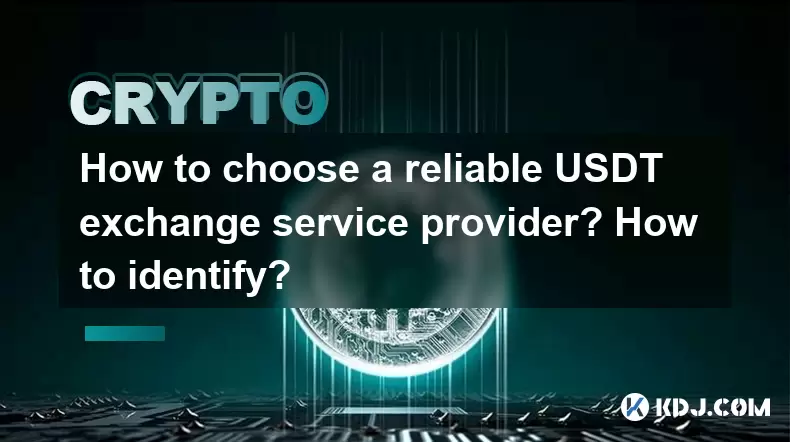
How to choose a reliable USDT exchange service provider? How to identify?
Jun 12,2025 at 03:15pm
Understanding the Role of USDT in Cryptocurrency TradingUSDT (Tether) is one of the most widely used stablecoins in the cryptocurrency market. It is d...
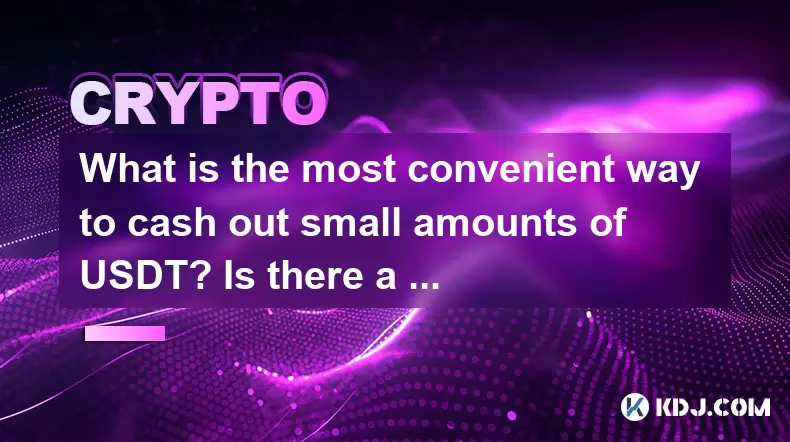
What is the most convenient way to cash out small amounts of USDT? Is there a shortcut?
Jun 11,2025 at 11:00pm
Understanding the Need to Cash Out Small USDT AmountsCashing out small amounts of USDT can be a challenge for many crypto users. Traditional methods o...
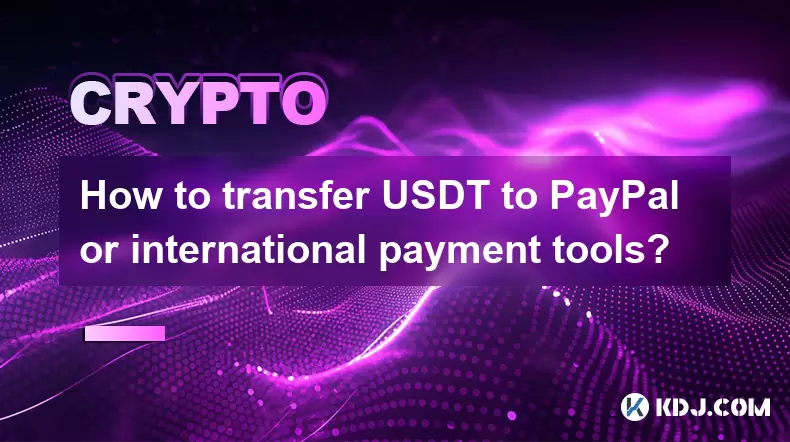
How to transfer USDT to PayPal or international payment tools?
Jun 15,2025 at 05:28am
Understanding the Basics of USDT and PayPal IntegrationUSDT (Tether) is a stablecoin pegged to the US dollar, offering blockchain-based value transfer...
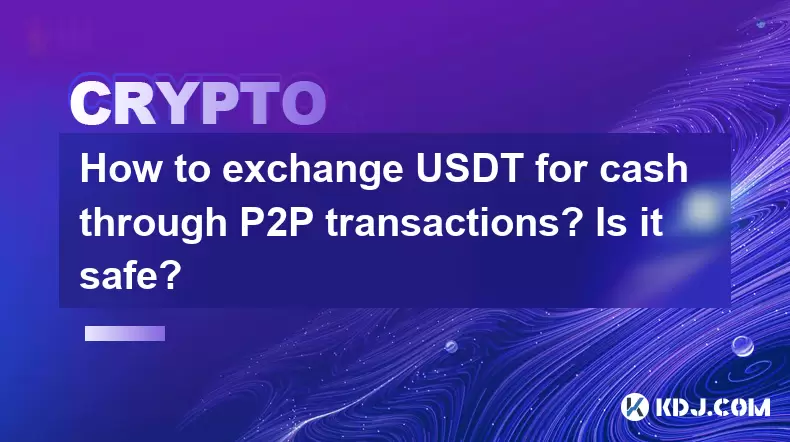
How to exchange USDT for cash through P2P transactions? Is it safe?
Jun 18,2025 at 07:56am
Understanding USDT and P2P TransactionsTether (USDT) is a stablecoin pegged to the value of the US dollar, making it a popular choice for users who wa...
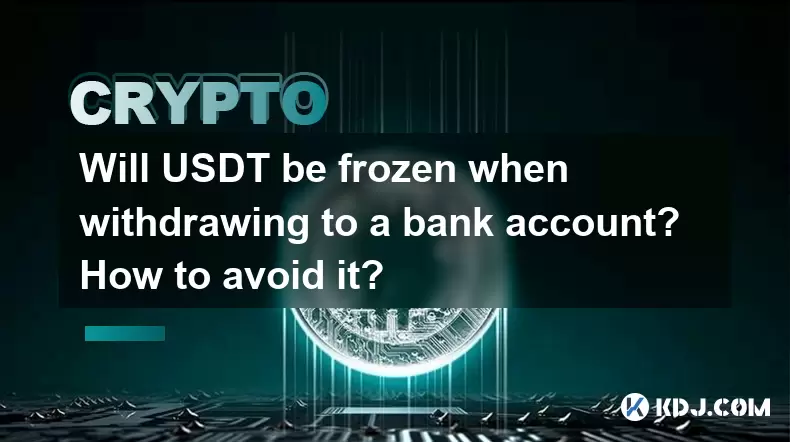
Will USDT be frozen when withdrawing to a bank account? How to avoid it?
Jun 15,2025 at 10:03am
Understanding USDT Withdrawals and Bank Account Freezing RisksWhen users decide to withdraw USDT (Tether) to a bank account, one of the most common co...
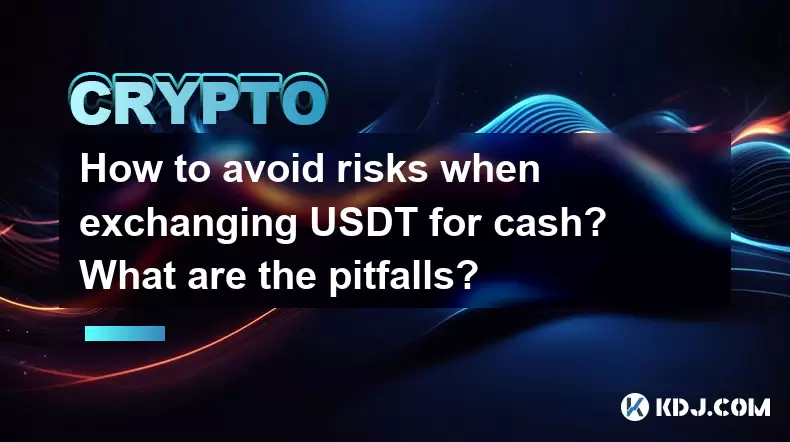
How to avoid risks when exchanging USDT for cash? What are the pitfalls?
Jun 11,2025 at 08:14pm
Understanding the Risks of Exchanging USDT for CashWhen exchanging USDT (Tether) for cash, users must be aware of the potential risks involved. As a s...

How to choose a reliable USDT exchange service provider? How to identify?
Jun 12,2025 at 03:15pm
Understanding the Role of USDT in Cryptocurrency TradingUSDT (Tether) is one of the most widely used stablecoins in the cryptocurrency market. It is d...

What is the most convenient way to cash out small amounts of USDT? Is there a shortcut?
Jun 11,2025 at 11:00pm
Understanding the Need to Cash Out Small USDT AmountsCashing out small amounts of USDT can be a challenge for many crypto users. Traditional methods o...

How to transfer USDT to PayPal or international payment tools?
Jun 15,2025 at 05:28am
Understanding the Basics of USDT and PayPal IntegrationUSDT (Tether) is a stablecoin pegged to the US dollar, offering blockchain-based value transfer...

How to exchange USDT for cash through P2P transactions? Is it safe?
Jun 18,2025 at 07:56am
Understanding USDT and P2P TransactionsTether (USDT) is a stablecoin pegged to the value of the US dollar, making it a popular choice for users who wa...

Will USDT be frozen when withdrawing to a bank account? How to avoid it?
Jun 15,2025 at 10:03am
Understanding USDT Withdrawals and Bank Account Freezing RisksWhen users decide to withdraw USDT (Tether) to a bank account, one of the most common co...

How to avoid risks when exchanging USDT for cash? What are the pitfalls?
Jun 11,2025 at 08:14pm
Understanding the Risks of Exchanging USDT for CashWhen exchanging USDT (Tether) for cash, users must be aware of the potential risks involved. As a s...
See all articles

























































































